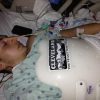Atrial fibrillation, known as A-FIB, is the most common heart rhythm abnormality, but addressing the causes of wear and tear on the heart can prevent the condition.
Contributed by Ohad Ziv, MD | Division Director of Electrophysiology.
While atrial fibrillation, known as A-FIB, is the most common heart rhythm abnormality, addressing the causes of wear and tear on the heart can prevent the condition.
“Atrial fibrillation is treatable and preventable,” says Dr. Ohad Ziv, MD, Division Director of Electrophysiology. “And often the first step we take to treat A-FIB is treating some of the risk factors involved.”
Risk factors
Since A-FIB is caused by wear and tear on the heart, there are several chronic diseases that can cause a patient to become diagnosed with A-FIB. Some risk factors patients can’t do anything about, like a family history of A-FIB or a personal history of stroke.
However, some risk factors, if improved, can actually reduce the risk of A-FIB or prevent it in the first place. Those risk factors include:
- Sleep apnea: Since sleep apnea limits the body’s oxygen intake during sleep, it can cause the heart to work harder. If you suspect you have sleep apnea, talk to your primary care provider about a sleep study at MetroHealth’s Center for Sleep Medicine.
- Obesity: Obesity is a chronic disease that causes your heart to work harder and encourages inflammation in your body. MetroHealth’s Weight Management Center can help patients find medical treatments for obesity.
- Alcohol use: According to studies from the American College of Cardiology, alcohol use can have an immediate effect on A-FIB risk. If you’re having trouble limiting your alcohol use, MetroHealth can help.
- Diabetes: Since diabetes can cause inflammation in your blood vessels and swings in blood sugar levels, it can also cause the type of heart changes that cause A-FIB. MetroHealth provides a wide range of diabetes management treatments and resources.
- High blood pressure: High blood pressure causes blood to exert strain on artery walls, leading to A-FIB. Be sure to talk to your provider about how you can manage your high blood pressure
How do I know if I have A-FIB?
While some people who have A-FIB don’t experience symptoms, there are some common signs of A-FIB. Learn more in our Simply Well blog on A-FIB Symptoms
Referrals from a primary care provider are required.
Learn more about our team at www.metrohealth.org/cardiology
or call 216-778-BEAT (2328).












